If you find that some sneaky bees have been busily building hives inside the walls of your home and don’t know what to do, The Bartlett Bee Whisperer is here to help! David L. Glover runs the insect-friendly bee rescue, removal, and relocation service in the Midsouth US—in West Tennessee, East Arkansas, and North Mississippi. He removes beehives from homes and businesses around 200 times each year; each colony has around 40k bees in it.
David’s rescued bees are given a chance to make the world a bit better and a bit sweeter after being moved. He gives them to nonprofit organizations who then use them in their programs or David uses the bees to repopulate empty hive boxes. That’s a huge boost to local beekeepers who recently suffered colony losses. A week and a half ago, David said that he removed the largest hive that he’s ever come across: all the combs put together came in at a whopping 30 feet!
Bored Panda wrote about The Bartlett Bee Whisperer last year and it caused quite a buzz. You can check out our earlier article right here. David previously went into detail all about his work. Scroll down to learn more about The Bee Whisperer and to check out the incredible photos from his day-to-day life at work.
More info: TheBartlettBeeWhisperer.com | Facebook | Instagram | Twitter | YouTube
The Bartlett Bee Whisperer David Glover shared how he removed the biggest beehive he had ever come across. The story caused quite a buzz
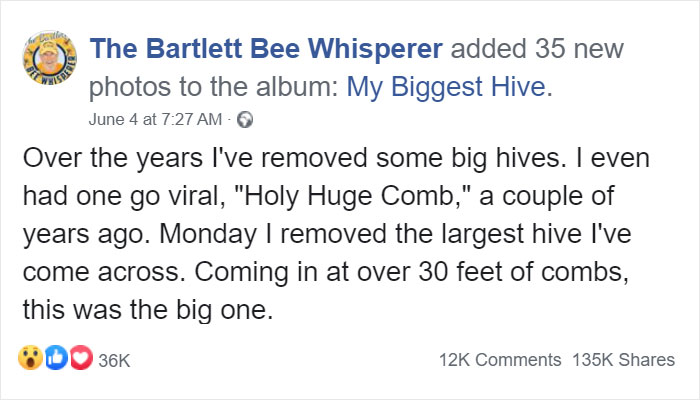
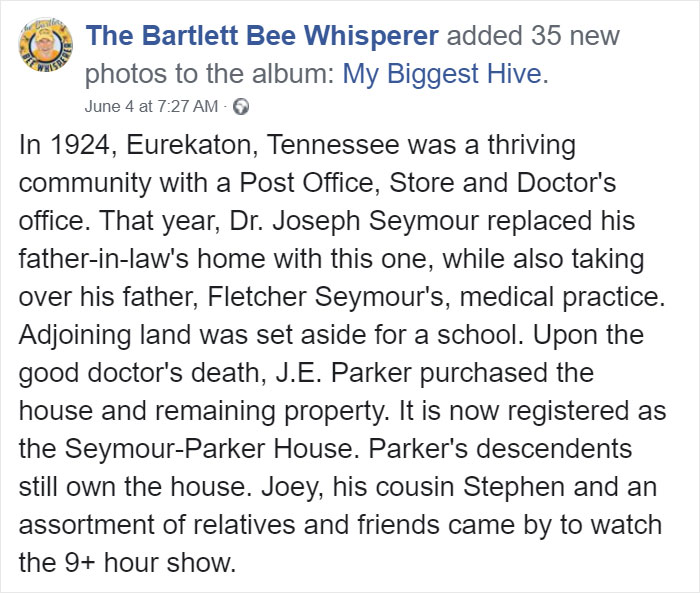
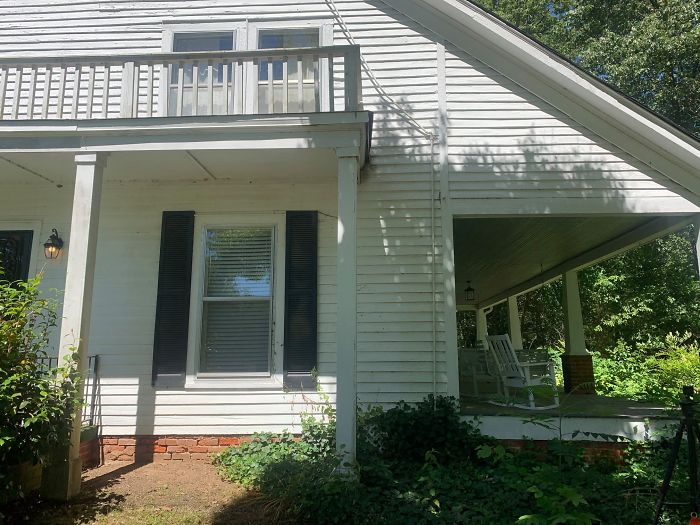
Oh, and bees have been here for at least 50 years. Stephen used to hear them while trying to sleep. They started in the second story deck and are now entering in this gap in the clapboards
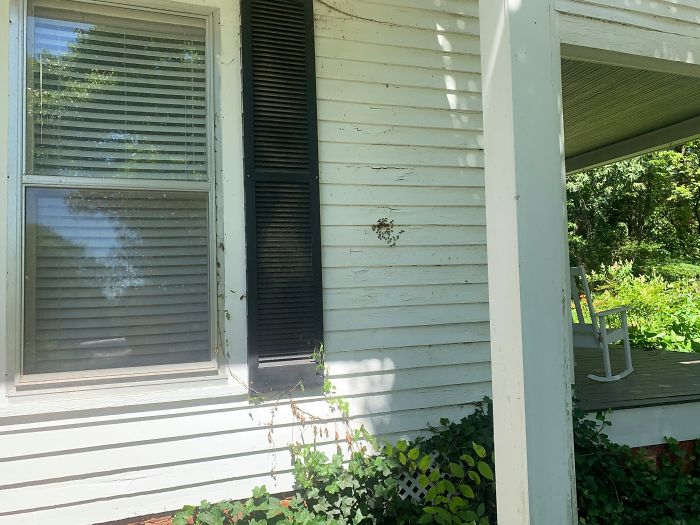
I think the bees are sending me a message in braille
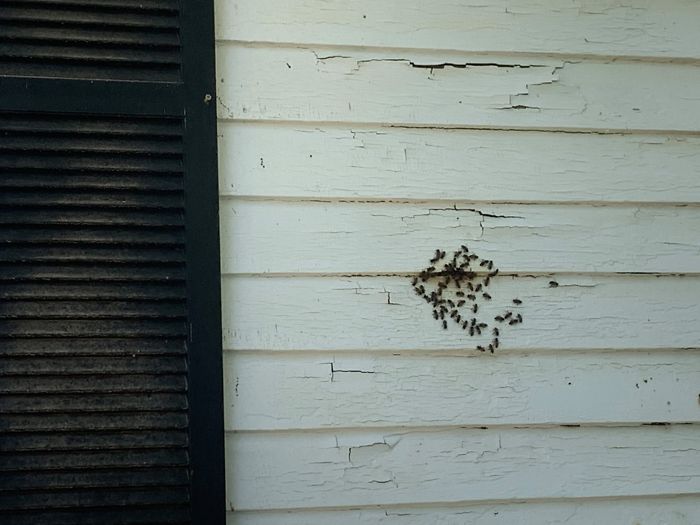
Inside the house, the heat signature was promising. I called Julie and presumptuously said we were looking at 8 feet of comb
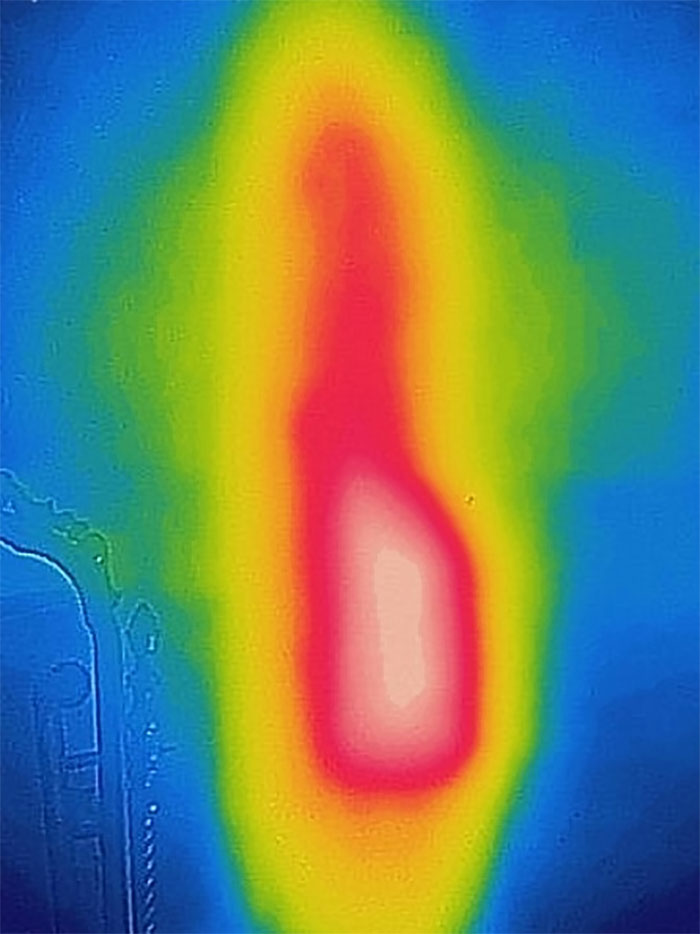
While I was setting up outside, I started getting the backstory on the bees that had been in the deck around 40-50 years ago…
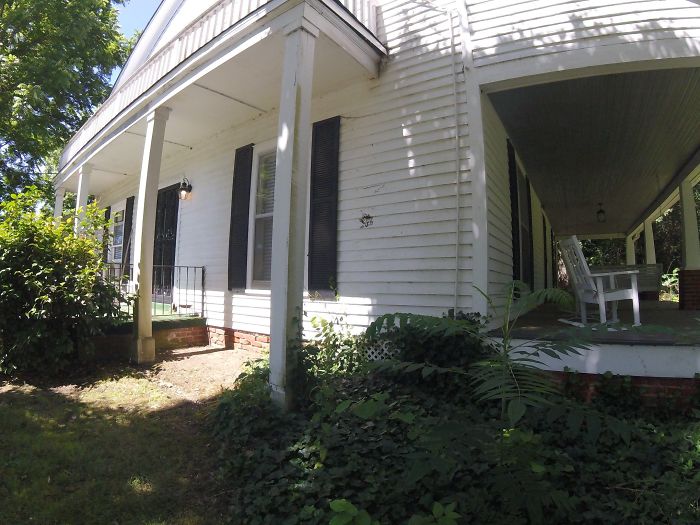
Because the heat signature showed the hive below the deck, I started up there, removing the clapboards. #ClassyCassie has been sick this week so she missed this show
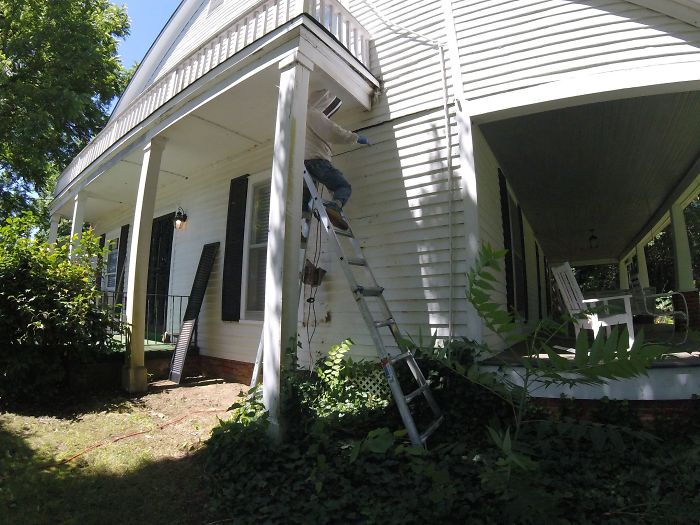
Today’s construction puts headers on top of the studs. When this house was built, the studs went the length of the walls. The potential for a long hive had just hit me. The cavities to the right of the hive have combs in them also, not as many bees, but combs nonetheless
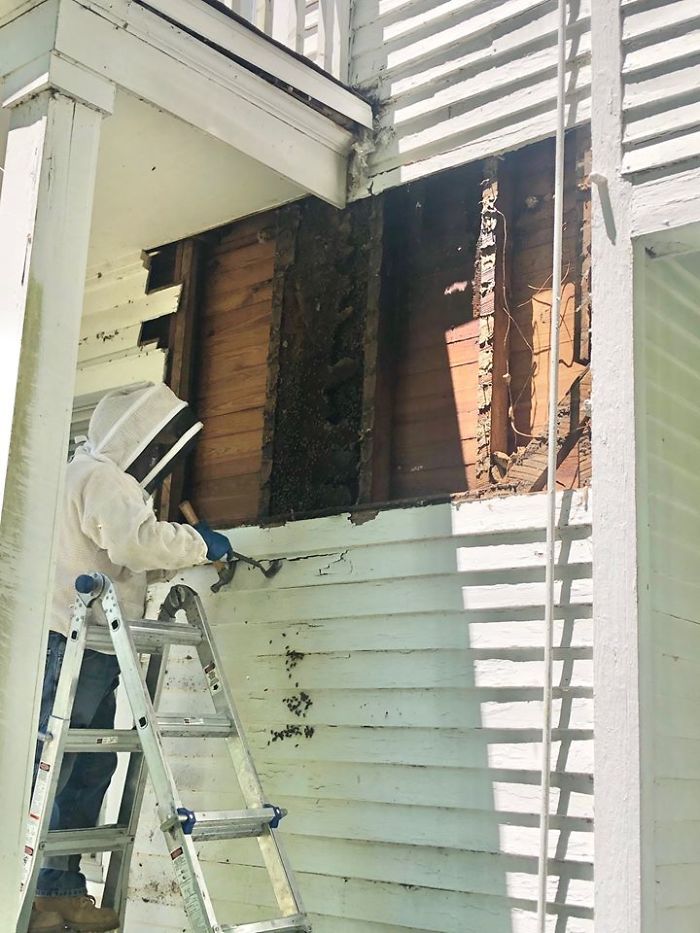
This was painstakenly slow for me. The nails were as solid as the construction. Tough old house!
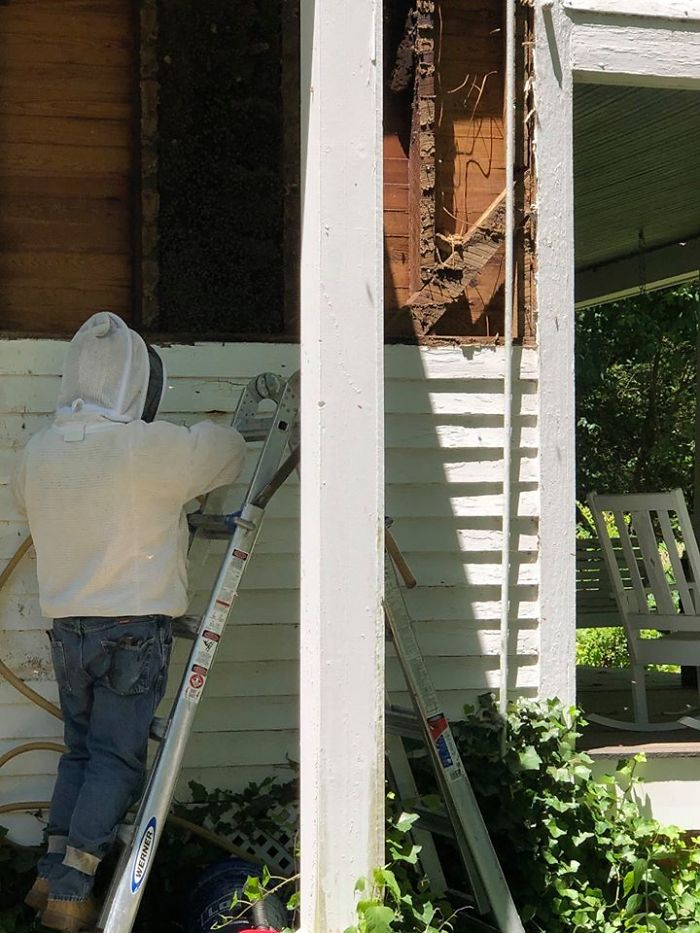
The active portion of the hive had a lot of dark comb
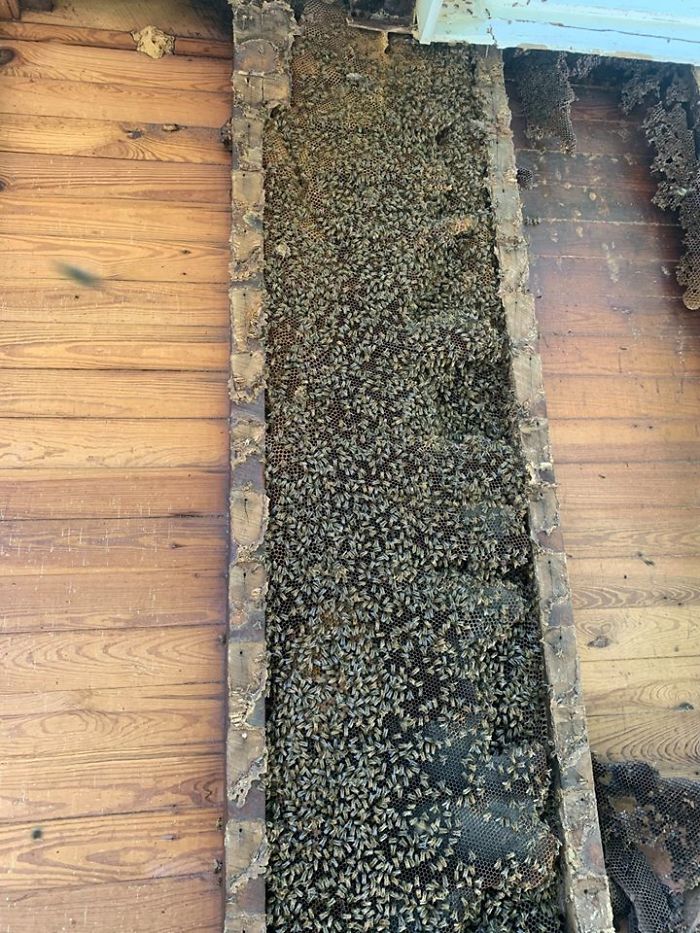
This is the local STEM teacher. She was excited to see the bees. They have an observation hive at the school
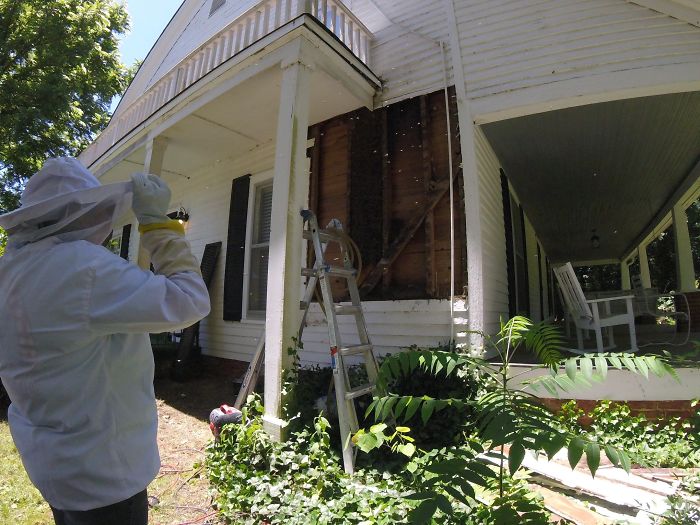
Does this hive look like a big nosed guy with a cigar in his mouth???
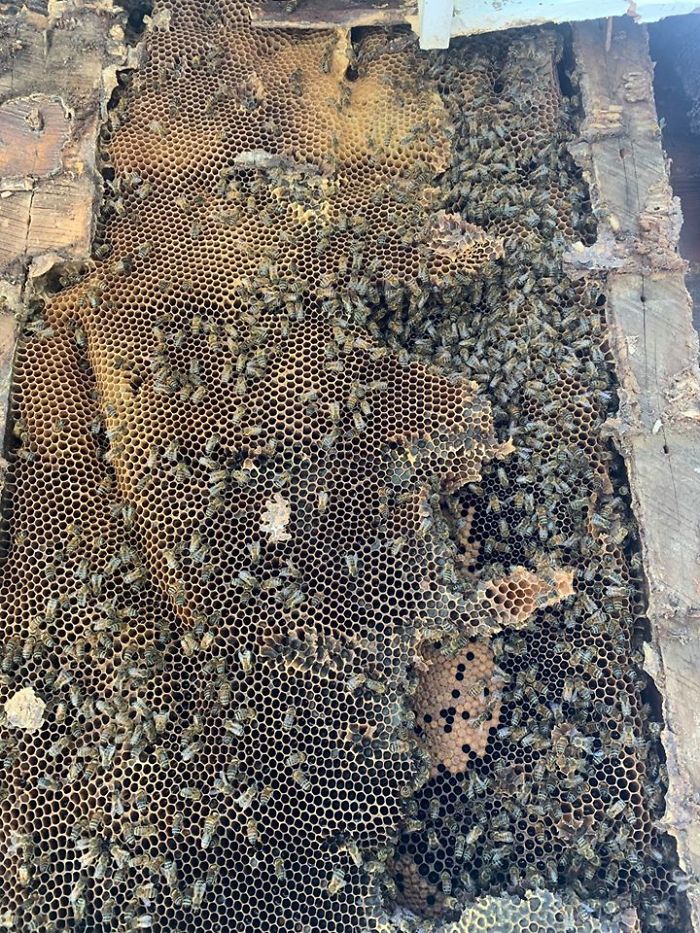
The bottom of the hive. WOW! Look at the color change
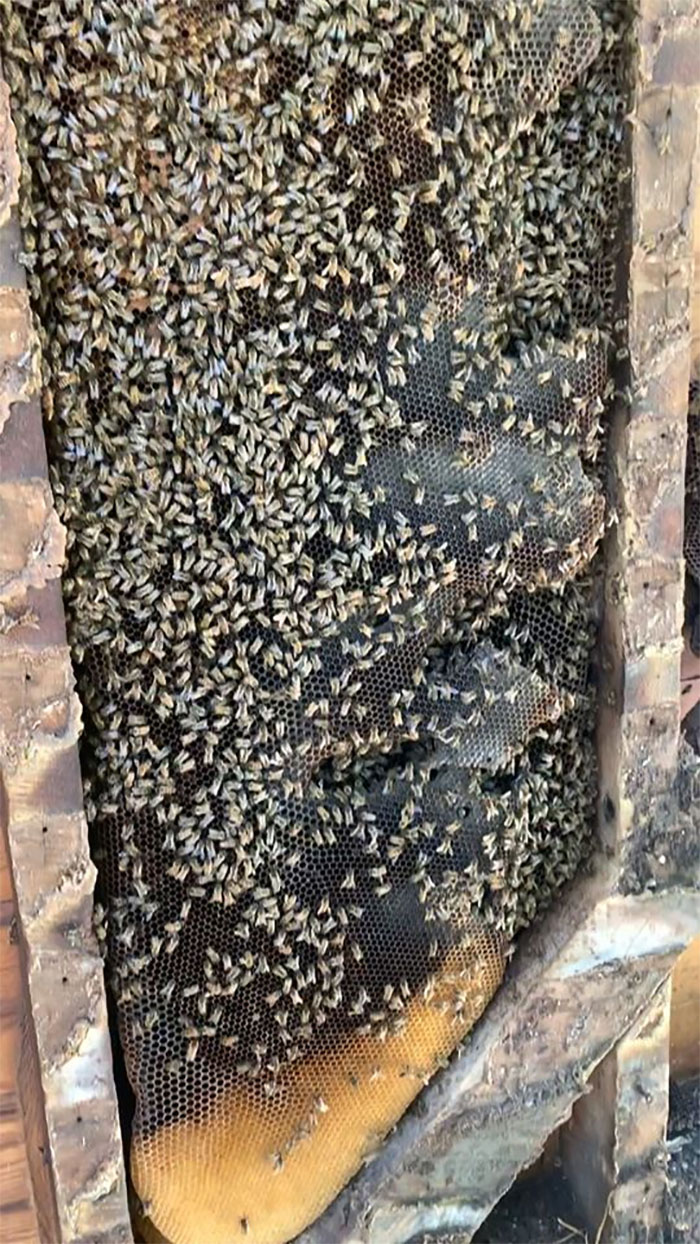
Some of the first combs I removed were mostly drone brood. I set them off to the side just in case I needed pieces of them for my game of comb-in-frame Tetris. The frenetically flying bees, robbers (neighboring honey bees seeing an opportunity to get some free food), showed up within minutes of opening the hive
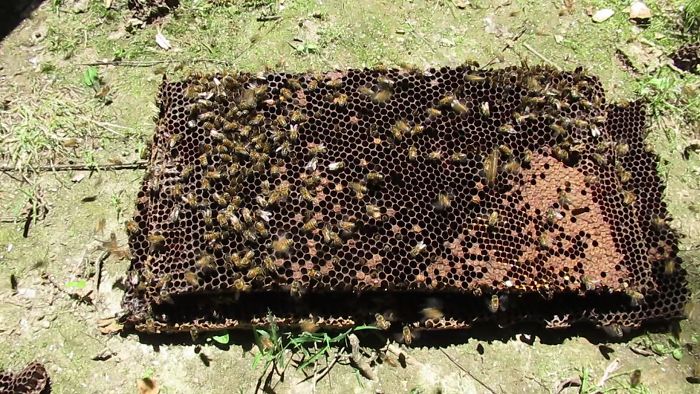
I almost always use plastic foundation as a carrying tray for combs, especially when they are large sections of combs. Photo credits to Mrs. Joey Parker. The sections of comb I was sawing out came from a single piece that was 8 feet tall and as wide as the distance between studs
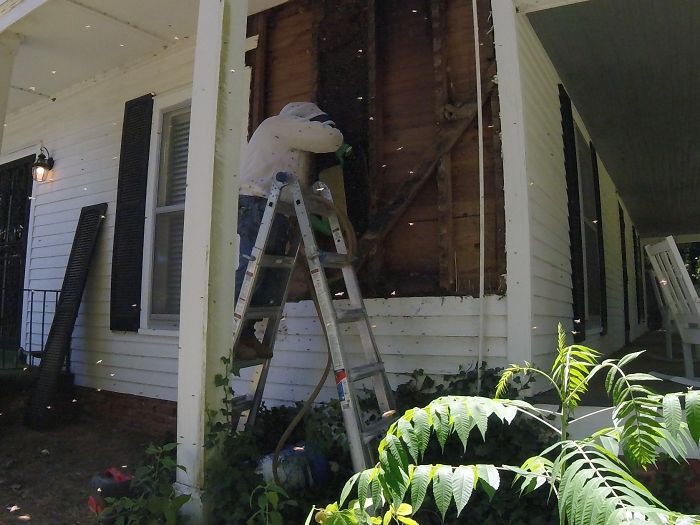
And another piece of brood comb
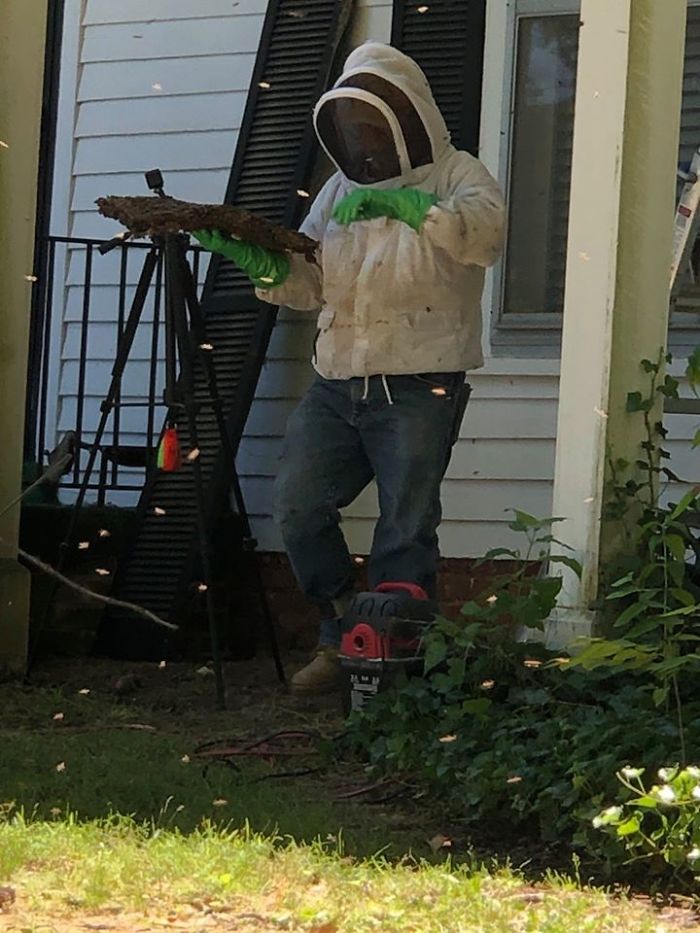
The process of removing a hive from a home is simple: 1. Vacuum bees off the face of the comb (the area that will be resting on the plastic foundation) 2. Cut the comb to the appropriate length or height. 3. Catch the comb. 4. Cut the comb to fit into a hive frame. 5. Rubber band the comb in place. 6. Put the frame in a box. 7. Repeat. Somewhere in that process, I need to add a step for “Try not to get stung.”
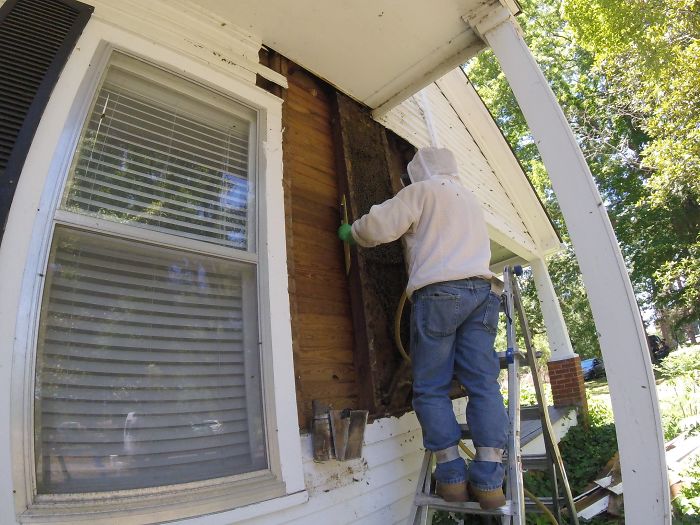
I repeated that process several times, saving 12 frames of brood combs
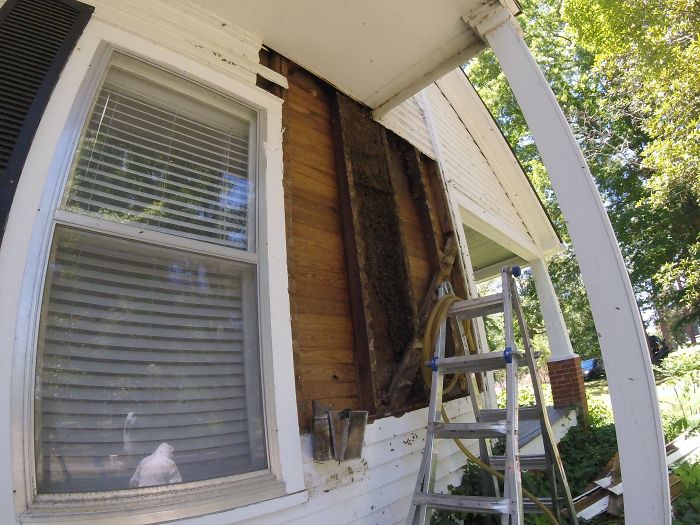
See how square those combs are? The bee-engineers made it almost easy for me here
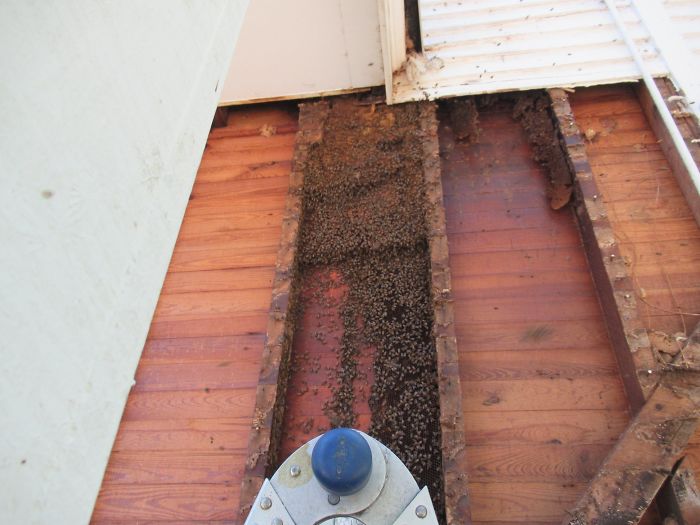
I didn’t remove small sections from the hive. Each piece I cut was large enough to go into 2 frames when halved
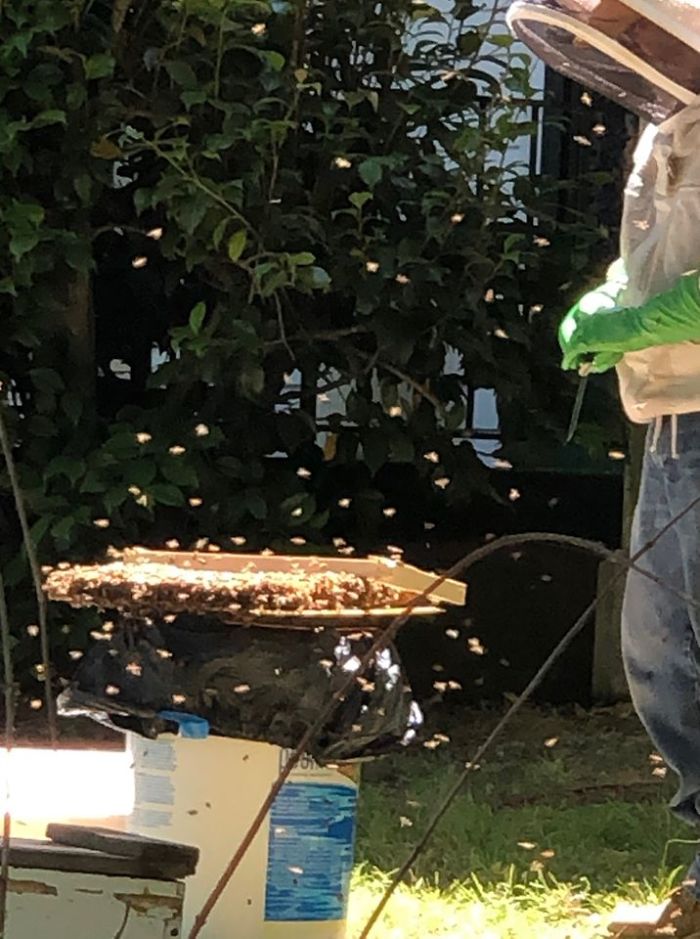
Speaking of square combs, I’ve filled up my transfer hive with 10 deep frames of brood combs. Now I’m working on a 5-frame nuc
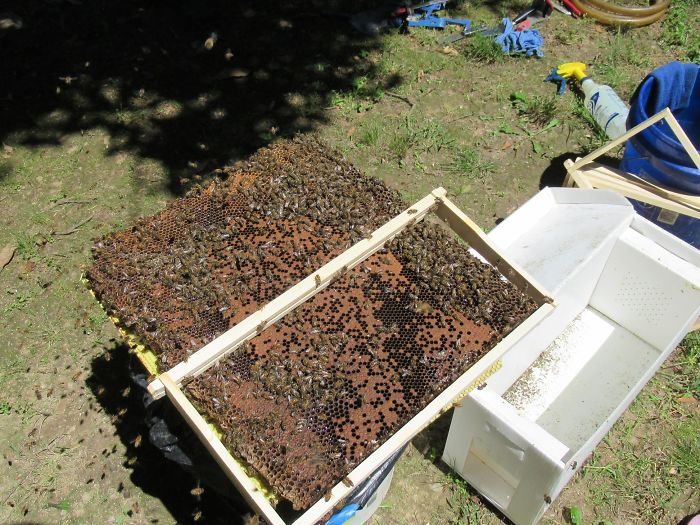
As I moved up the hive, I noticed dry combs and bees extending further up the wall and some combs going behind me into the deck
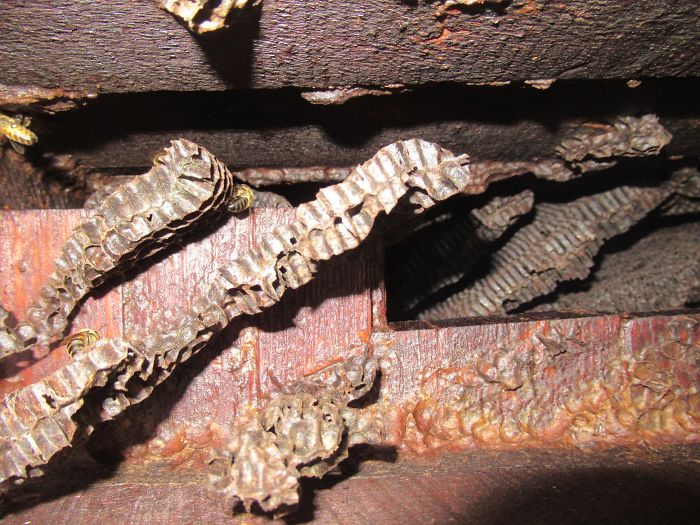
I had to remove the bottom of the deck…
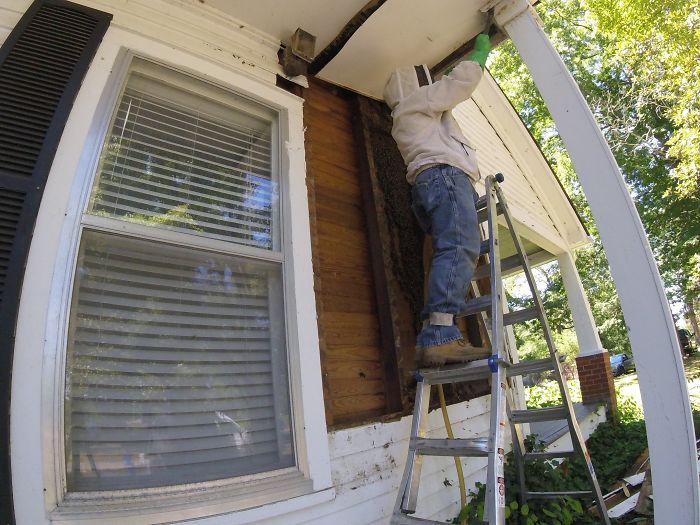
to remove those combs
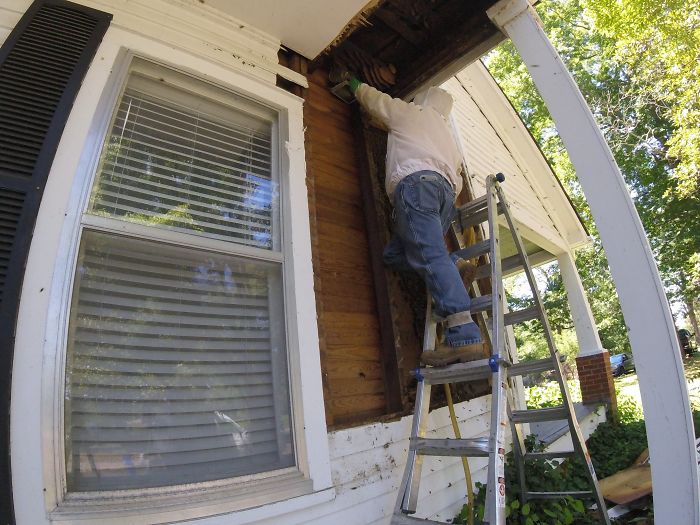
Instead of continuing the removal process working upwards, I started working from the deck down. I had not seen the queen and I didn’t want her hiding where I couldn’t see her
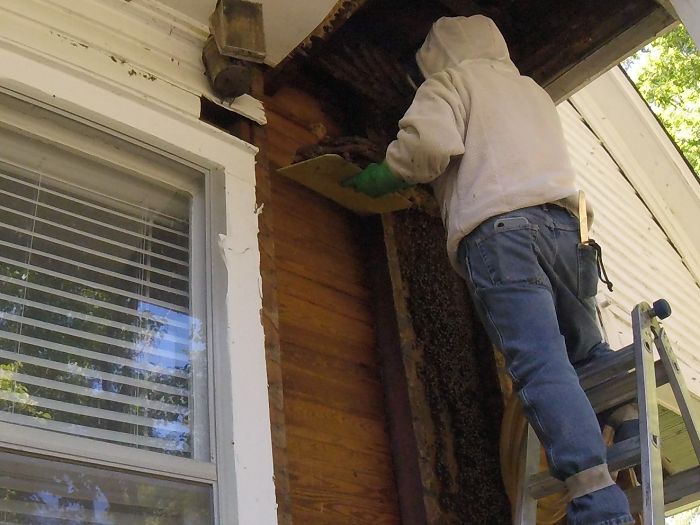
Most of the deck combs were dry. The ones closest to the wall were filled with honey
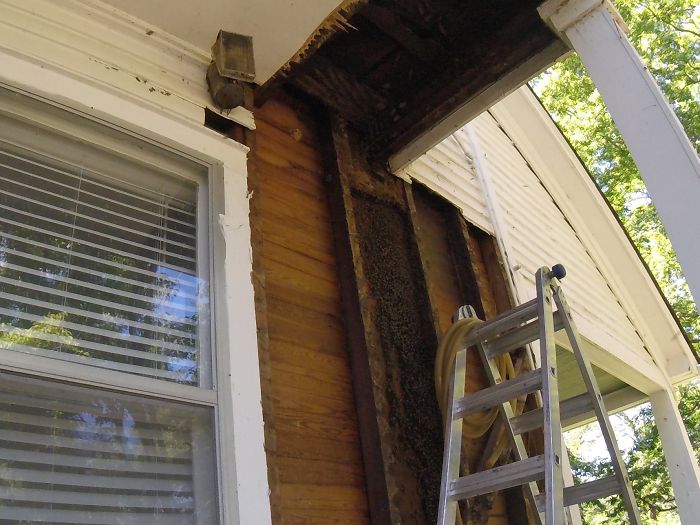
Working downward on the last comb in this section, I felt confident that the queen was still down here. Tell tale signs and movements from the bees gave me that confidence
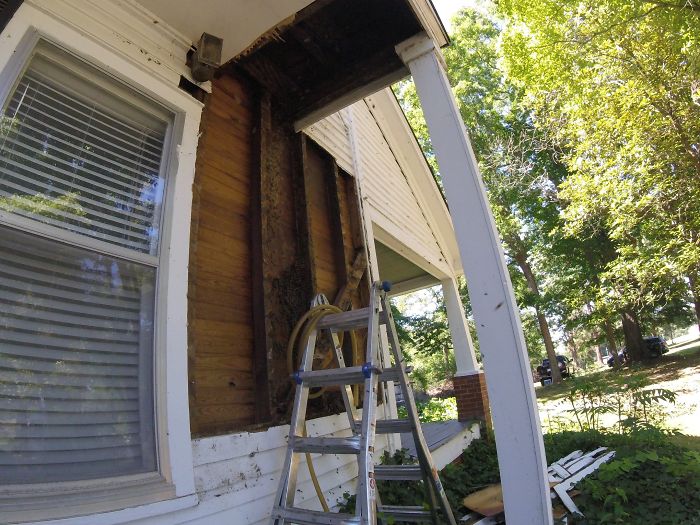
I wasn’t disappointed. She was a very dark breed of bee, almost too hard to see on all the dark wood
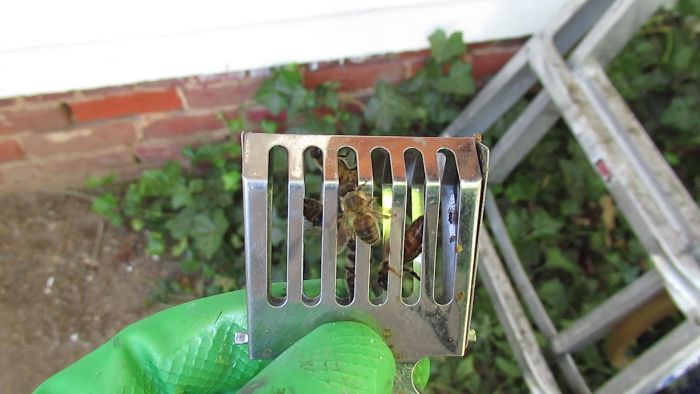
In the shade and over my transfer hive, I moved the queen into a candied queen cage
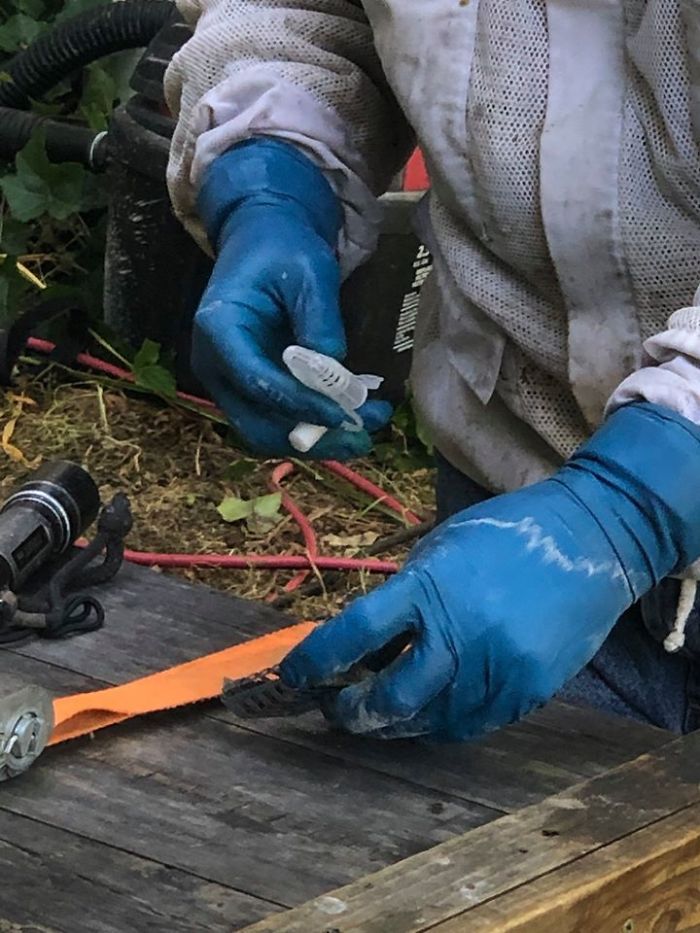
The queen and one worker. I added 3 more attendants to the cage and placed it in my pocket for safekeeping
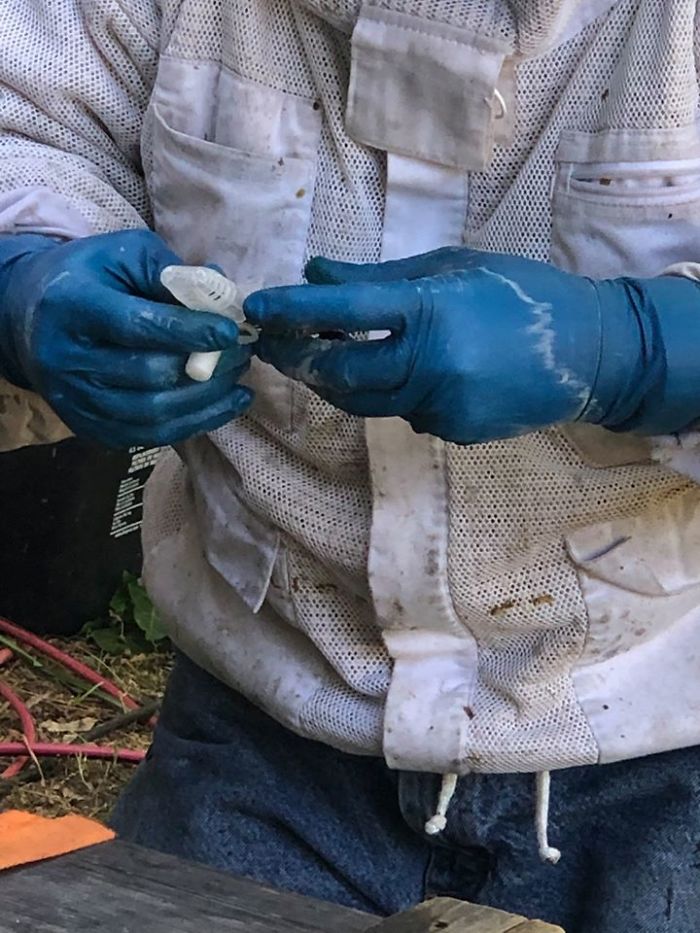
Moving the ladder to the outside, I started exposing the rest of the hive
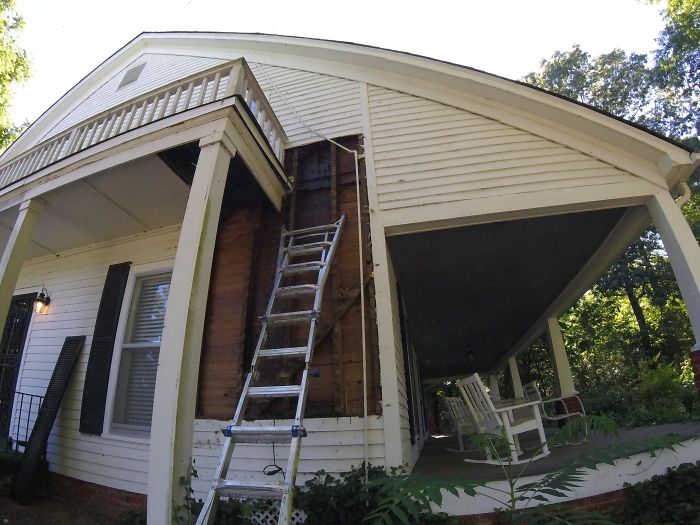
That is not a look of defeat, but the focused look of a man removing more clapboard. So much for the 8 foot hive
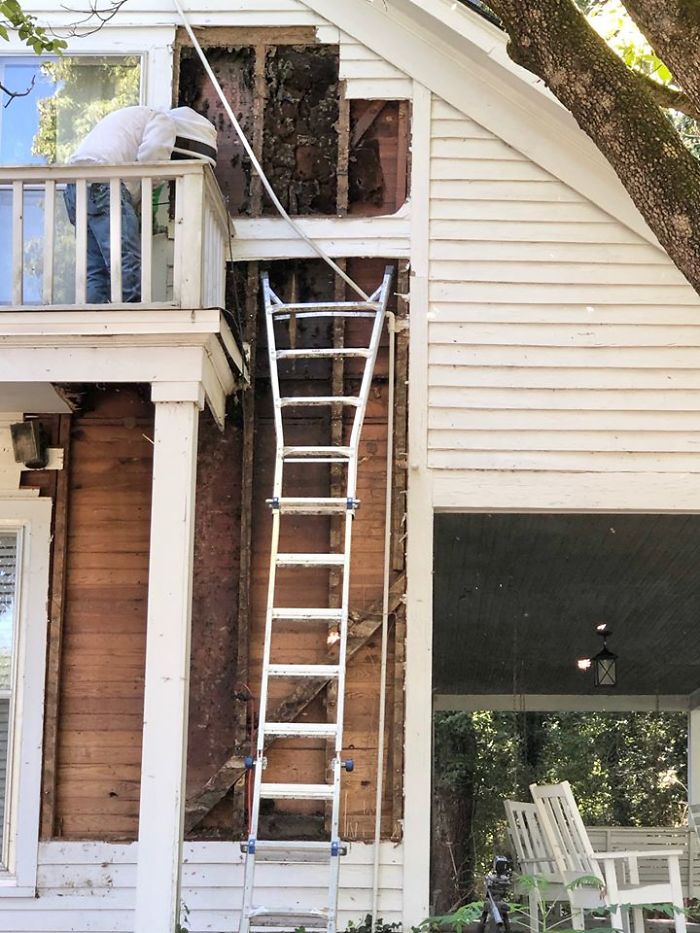
All three sections had more dry combs, but they had all been for honey at one time
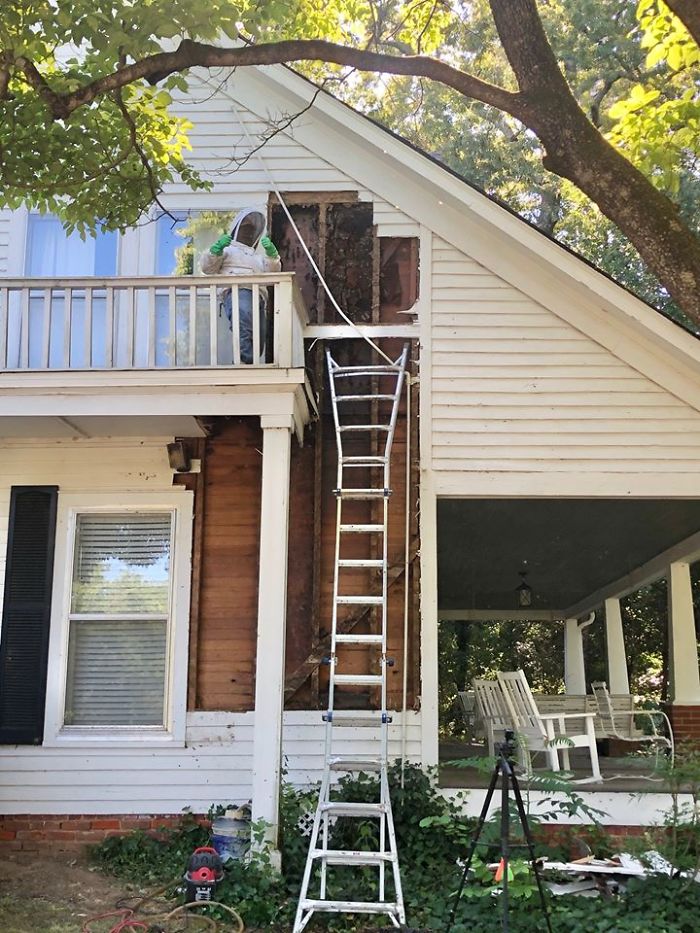
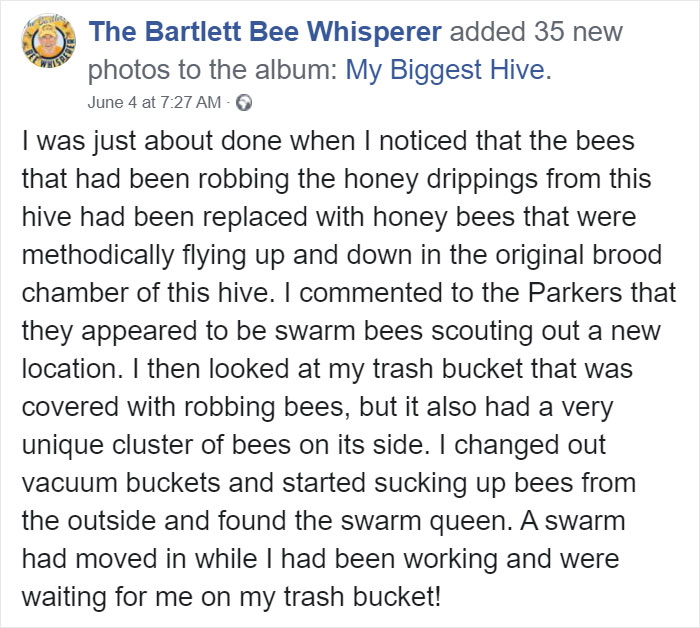
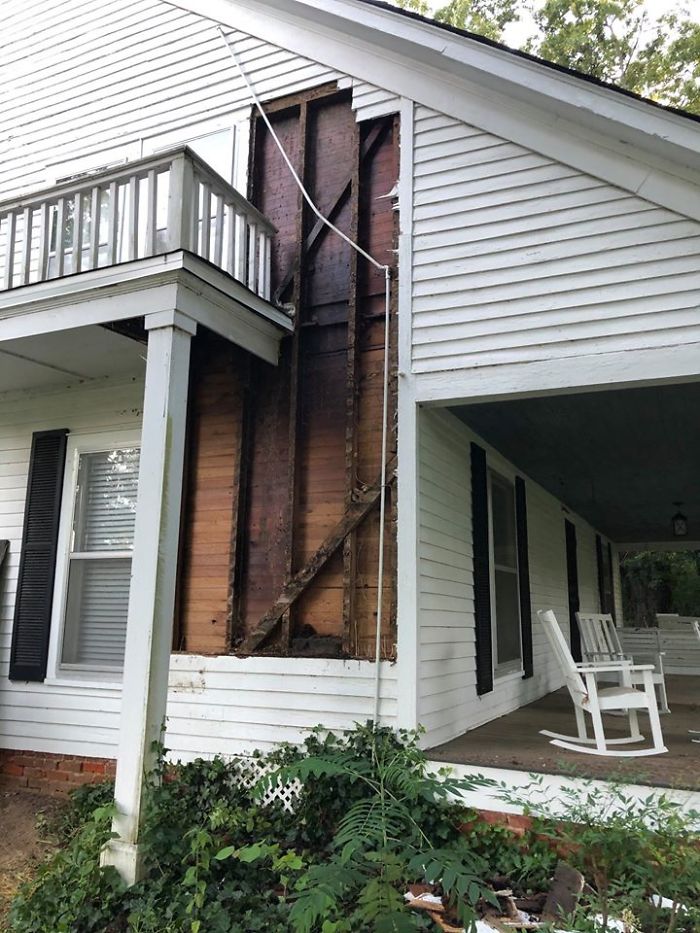
Two colonies, two queens, twelve frames of brood, three stings, and a Chick-fil-A sandwich from the youngest Parker (the last to arrive for the show). It was a great day. Done Y’all!
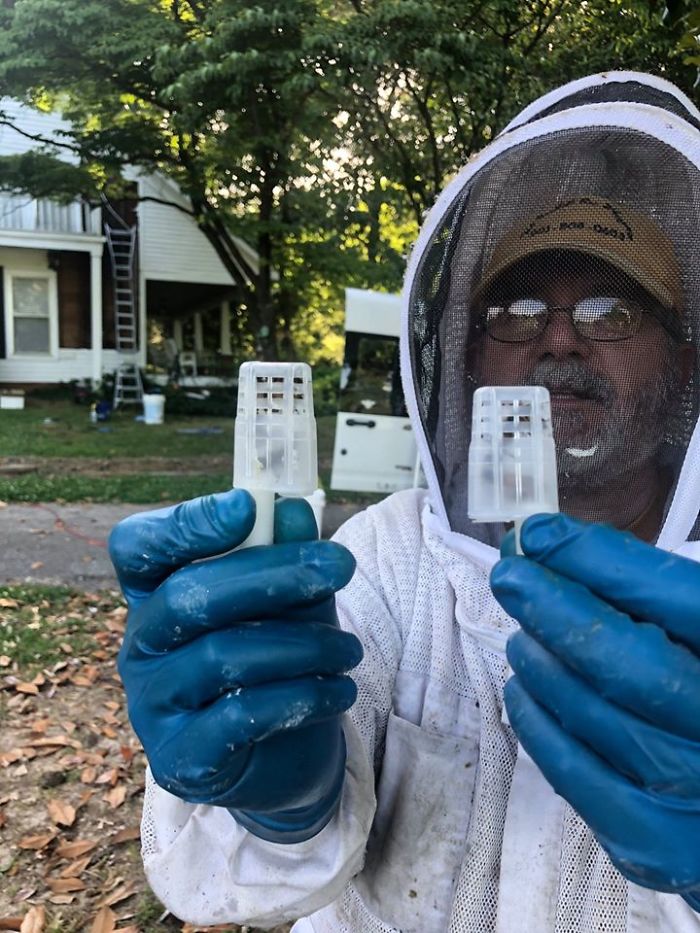
David told Bored Panda that the first thing he does while on the job is to identify if he is, in fact, dealing with honey bees. “You’d be surprised how many people don’t know the difference between bees and wasps or yellow jackets,” he pointed out.
“I then locate the hive using forward-looking infrared. Step by step, the area of the home is opened, and all combs removed. Brood combs are rubber-banded into hive frames and honey goes into a bucket (as long as the bees have never been sprayed),” The Bartlett Bee Whisperer walked us through his job.
He joked that the odds are that the bees have never been sprayed if the homeowner is willing to eat a piece of honeycomb with him.“
“The bees who do not follow the combs into the new hive box are vacuumed into a two-stage vacuum. They are added back to the new hive once they are set up in their new yard,” David explained what happens to all the other bees scattered around the property.
“No one is aware of the size of their honey beehive,” The Bee Whisperer told us that people are shocked by how big the hives are. “They are all surprised because they are expecting something the size of a wasp nest or hornet’s nest. The infrared gives them the first clue, but that’s only the brood combs of the hive. The babies are incubated at 94.5 degrees Fahrenheit [34.7 degrees Celsius]. Any honeycombs in the hive are cooler and usually don’t show on the IR.”
David has been rescuing and relocating bees for over 10 years now. He began documenting his job in social media posts after he was wowed by one beehive and wanted to share his experience: he had to remove an entire section of a wall brick by brick to get to the comb.
Here’s how people reacted to The Bee Whisperer’s story
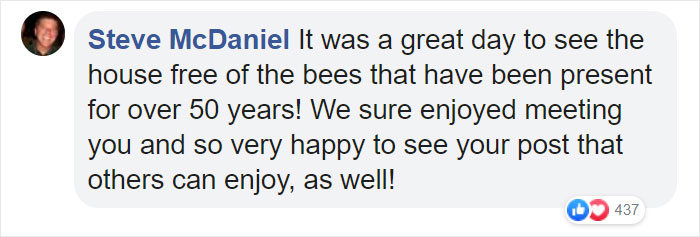
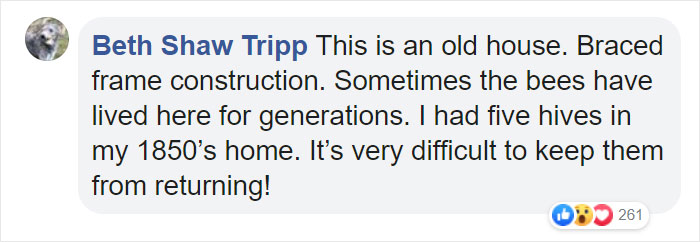
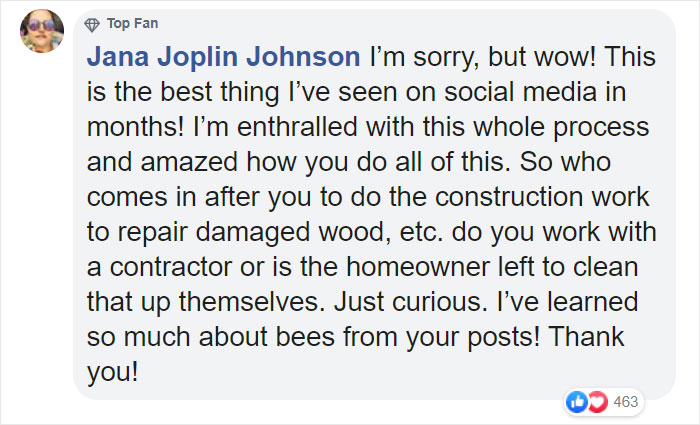
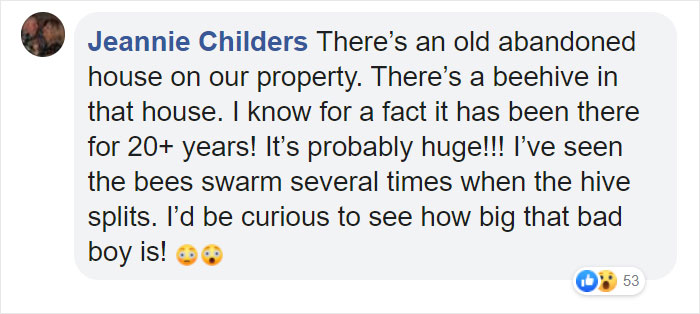
from Bored Panda https://ift.tt/2UDNfya

No comments:
Post a Comment